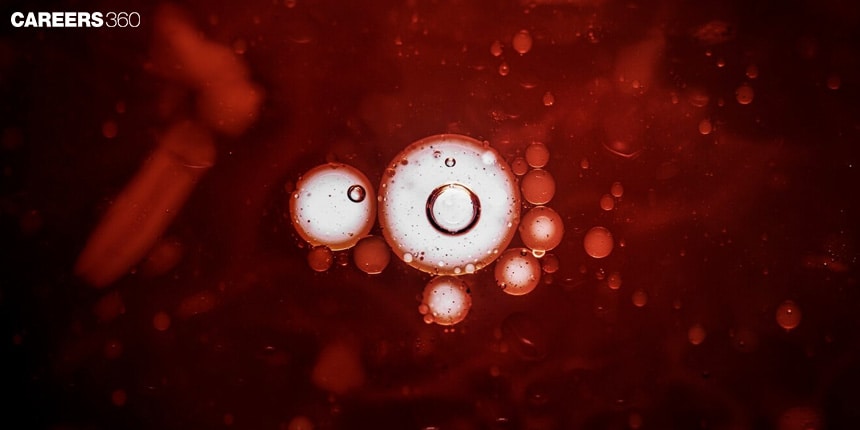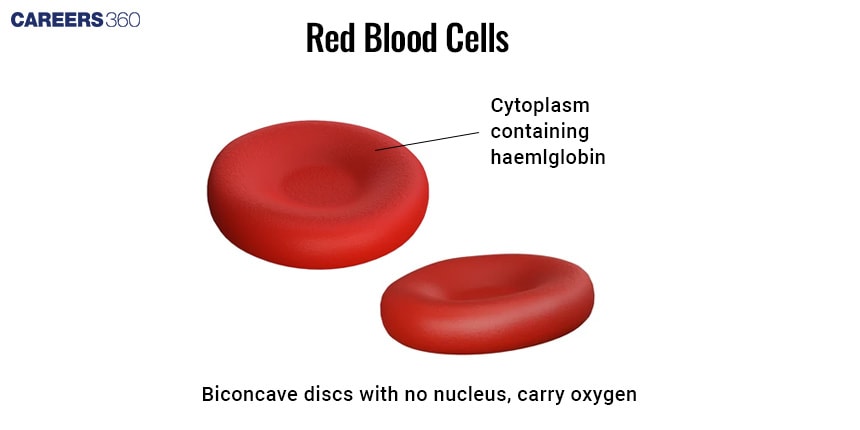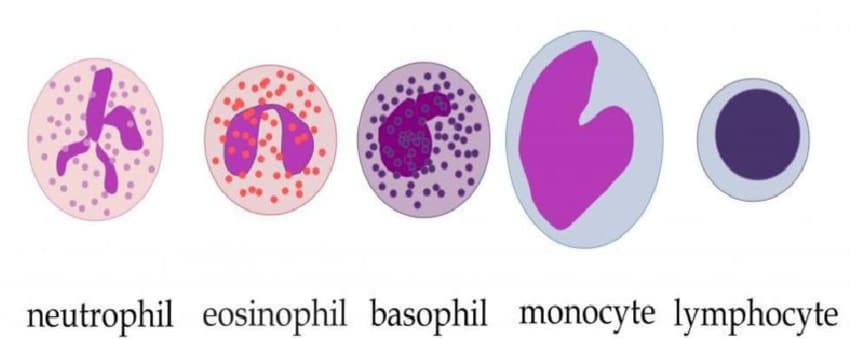Types of Blood Cells and Their Functions
What Is Blood?
Blood is one of the most important fluids in the human body, made up of plasma and cellular components that include the different types of blood cells. Due to the highly specialised nature of various blood cells to do certain functions to ensure health and immunity throughout the life of an individual, it becomes very important to understand blood cell type.
NEET 2025: Mock Test Series | Syllabus | High Scoring Topics | PYQs
NEET Important PYQ's Subject wise: Physics | Chemistry | Biology
New: Meet Careers360 B.Tech/NEET Experts in your City | Book your Seat now
- What Is Blood?
- Composition Of Blood
- Types Of Blood Cells
- Blood Cell Formation (Hematopoiesis)
- Clinical Significance And Diagnostic Tests
- The Video Recommended On Types Of Blood Cells:

The article tries to probe in detail into the structure and functions, disorders, and clinical significance of RBCs, WBCs, and platelets.
Composition Of Blood
Blood consists of 55% plasma and 45% blood cells by volume.
Components:
Plasma: A yellowish fluid mainly consisting of water (90%), proteins/enzymes (albumin, globulins, fibrinogen), different electrolytes (sodium, potassium, calcium), hormones, and waste products.
Blood Cells: Cellular elements are required for various physiological activities.
Types Of Blood Cells
The general classification of blood cells is:
Red Blood Cells (RBCs): They carry oxygen from the lungs to tissues and carbon dioxide from tissues to be exhaled out from the lungs.
White Blood Cells (WBCs: They are an integral part of the immune system. They offer active defence against infection and foreign elements.
Platelets (Thrombocytes): They play a very crucial role in blood clotting, preventing excessive bleeding.
Diagram: Types Of Blood Cells

Red Blood Cells (RBCs)
Structure and Morphology: Biconcave discs, are enucleated, making them flexible and increasing their surface area for efficient gas exchange.
Contains haemoglobin molecules that reversibly bind oxygen.
Function: To transport oxygen bound to haemoglobin from the lungs to tissues.
Helps to carry carbon dioxide from tissues to the lungs for excretion.
Diagram: RBCs

Lifespan And Production:
About 120 days in their lifetime.
Produced constantly within the bone marrow through the process of erythropoiesis, a process under the control of the hormone erythropoietin.
Disorders Related To RBCs
Anaemia: Low count of RBCs and haemoglobin; hence, low oxygen-carrying capacity.
Polycythemia: Abnormally high count of RBCs, which may result in blood clots.
White Blood Cells (WBCs)
The WBCs give protection to the body against a variety of disease-causing organisms and foreign products through immune responses.
White blood cells are classified are:
Granulocytes
Neutrophils: They are the most abundant, phagocytic cells that engulf and destroy bacteria and fungi.
Eosinophils: They fight against multicellular parasites and contribute to allergic responses by releasing histamines.
Basophils: They release histamine and other chemicals during inflammation and allergic reactions.
Agranulocytes
Lymphocytes: Primary role in adaptive immunity.
B cells: Production of antibodies
T cells: Production of cells which directly attack the infected or abnormal cells
Natural Killer NK cells: Recognition and thus killing of infected or cancerous cells.
Monocytes: Go on to become macrophages in tissues, ingestion of foreign invaders and debris.
Diagram: Types Of WBCs

Disorders Related To WBCs
Leukaemia: Cancer of WBCs, an uncontrolled proliferation of blood cells which are abnormal.
Lymphoma: Cancer arising due to lymphocytes, affects the lymph nodes and other lymphatic tissues.
Platelets (Thrombocytes)
Small, disk-shaped portions of cells with no nucleus.
Implicated in blood clotting or hemostasis to prevent the loss of blood.
Production And Lifespan:
Derived by the segmentation of megakaryocytes in the marrow of bones.
The platelets live for about 8-10 days.
Disorders Associated With Platelets:
Thrombocytopenia: Low platelet count that may lead to excessive bleeding.
Thrombocytosis: High platelets count that may lead to blood clotting.
Blood Cell Formation (Hematopoiesis)
Most of the blood cells forming occurs in the bone marrow.
Stem Cells And Differentiation:
Hematopoietic stem cells give rise to diverse blood cell lineages through differentiation, which is tightly regulated via cytokines and growth factors.
Role of Bone Marrow: Provides an inductive microenvironment for hematopoiesis.
It contains particular stromal cells demonstrated to meter the maintenance, self-renewal, and differentiation fate of stem cells.
Clinical Significance And Diagnostic Tests
Common Blood Tests are:
Complete Blood Count (CBC): Quantitative and qualitative assay of the blood cells.
Blood Smear: It is the examination of blood cells under a microscope to assess morphology and detect morphological abnormalities.
The interpretation of CBC results will help diagnose anaemia, infections, leukaemia, and other blood disorders.
Blood smear analysis allows for gaining more information about cell morphology and certain aberrations.
The Video Recommended On Types Of Blood Cells:
Frequently Asked Questions (FAQs)
RBCs transport oxygen. WBCs fight infection, and platelets help in clotting.
Red blood cells transport oxygen haemoglobin, which binds it in the lungs and releases it in tissues.
WBCs detect and destroy pathogens and foreign substances; thus, they are involved in immunity.
Hematopoiesis in the bone marrow from stem cells gives rise to various blood cell types.
Disorders like anaemia, leukaemia, and thrombocytopenia are diagnosed using CBC and blood smears.
Also Read
29 Nov'24 01:19 PM
27 Nov'24 07:39 PM
27 Nov'24 07:15 PM
27 Nov'24 05:11 PM
26 Nov'24 08:14 PM
26 Nov'24 06:50 PM
26 Nov'24 05:51 PM
26 Nov'24 04:44 PM
26 Nov'24 03:52 PM
26 Nov'24 02:55 PM

